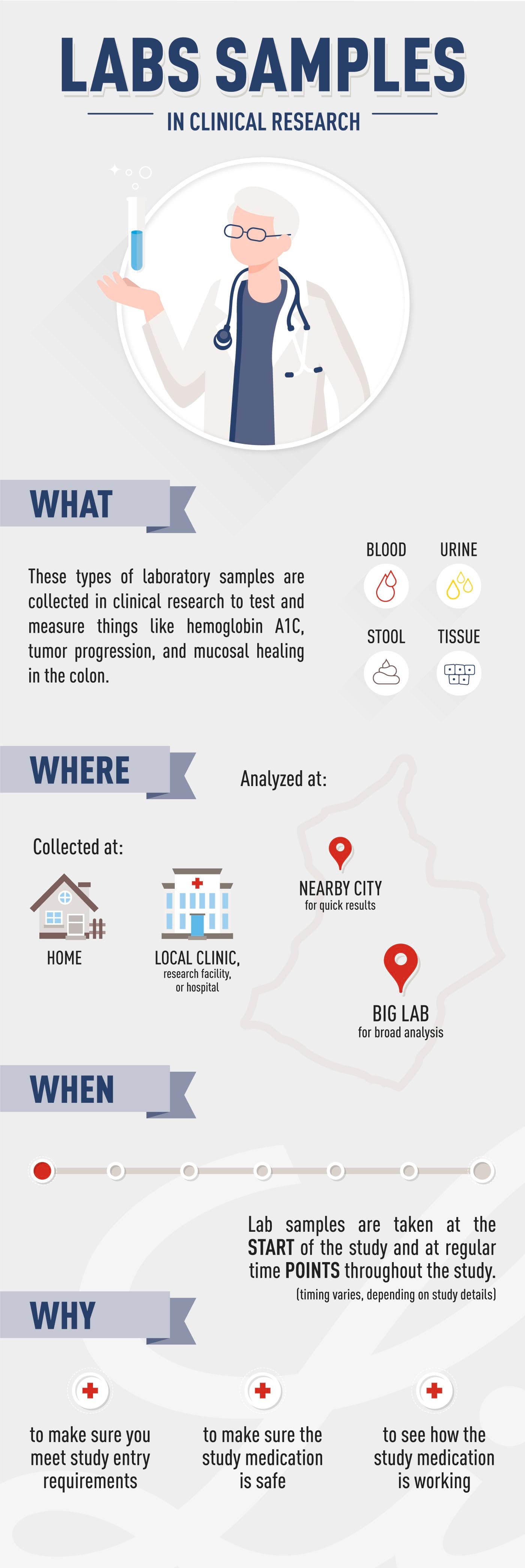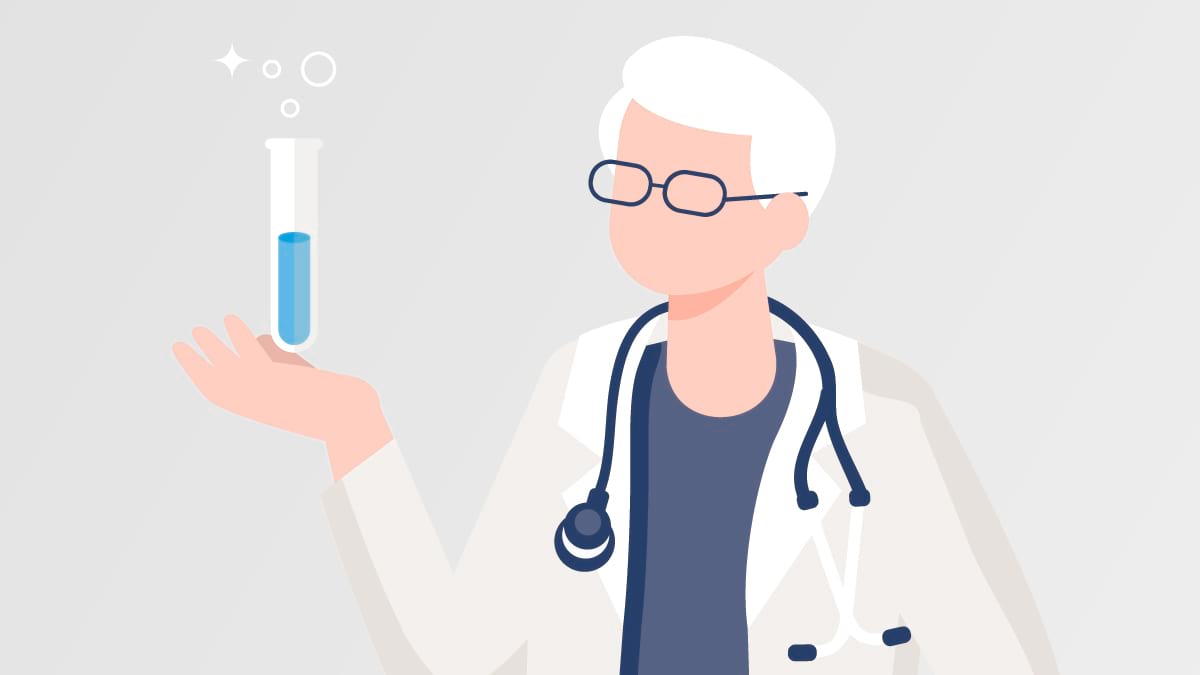Most of us are pretty familiar with going to the doctor for a routine visit and having blood drawn for lab analysis. Depending on your age and health status, you may also know what it’s like to give samples of urine or even stool, or you may have a health condition that is assessed by giving tissue samples (think of tumor biopsies for certain types of cancer).
Some of these lab samples are easier to give than others, and some are easier to analyze than others. So why are people asked to give lab samples? What kinds of things are learned from assessing lab results?
In clinical research, the number and frequency of lab samples can be much higher than in routine care. This is true for several reasons:
- We need to confirm that your health status matches the entry requirements for the research study.
- For women who may be able to have children, we check periodically to ensure you have not gotten pregnant during the study. In many cases, we don’t know yet what effect the study medication may have on the baby, and we want to avoid unnecessary risk. So we usually require that both men and women minimize the chance of pregnancy.
- We want to be certain the study medication is safe and that you are not experiencing ill effects from taking the study medication.
- We need to assess how the study medication is working in your body and compare your results with those of other research participants from all over the world.
- In some cases, we want to see if the study medication works better in people with certain types of biomarkers. Biomarkers are measurable signs in the blood or other bodily fluid that tells a medical professional what is taking place inside a patient’s body.
The information gathered from the testing of lab samples is some of the most important knowledge we gain in clinical research, so clinical trial participants need to contribute the required lab samples at the time points defined in the study procedures.
The lab data collection process is a key point of discussion in our CoDESIGN sessions. In those sessions, patients and clinical research site staff help ensure we are collecting only the lab samples that are necessary for the research and that we are making it as easy as possible to conduct and participate in the study.
It is also important that research sponsors like Lilly carefully define the lab requirements that answer the research questions. Think about times you have had to give a blood sample, for example. Sometimes the lab technician just needs to fill two vials, but sometimes there is a pile of tubes to fill! For every study we sponsor, we try to avoid the “pile of tubes” scenario to minimize the impact on you. In some cases, lab samples can even be collected at home (for example, a 24-hour urine collection). In these studies, the supplies and instructions would be provided to you.
Now that you know the basics about the role of lab samples in clinical trials, we’re breaking down the key takeaways in the infographic below. Take a look and let us know on Twitter what other research lab-related questions are on your mind.

Are you or a loved one interested in participating in a clinical trial? Check out Lilly’s enrolling trials here.


